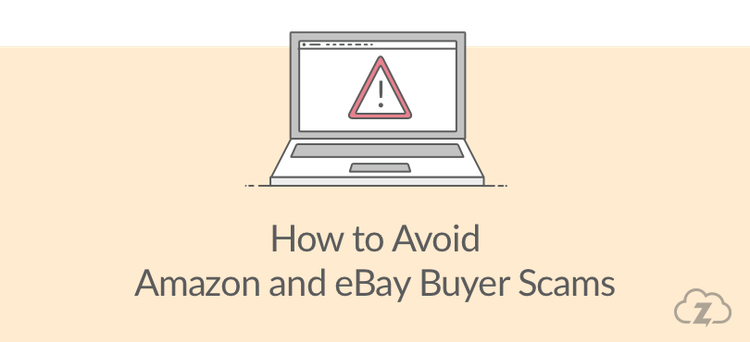How to avoid Amazon and eBay buyer scams

While most ecommerce transactions happen without incident, unfortunately, all online sellers will be familiar with stories of dishonest and fraudulent buyers. For sellers using Amazon and eBay, who are completely dependent on feedback and ratings, scams like these can be a serious issue. We take a look at the different scams that buyers may try, and what you can do to protect your business.
What scams should you look out for as an online seller?
If you’re just starting to sell online then these are some of the most commons issues that sellers have with fraudulent buyers:
- Buyers claiming the item never arrived
- Item faulty or not as described when it was sent in perfect condition.
- Being asked to send to a different address from the one listed on eBay/PayPal
- Taking advantage of Amazon and eBay's generous returns policy (sending nothing back, or sending something different and still getting a refund)
How to avoid getting scammed as an online seller
There are a few simple measures you can take to protect yourself against fraudulent buyers:
- It may seem obvious that sending something tracked will put off buyers from claiming something didn't arrive, but plenty of sellers still don't to keep costs down. If you're selling high value items then a tracked, and insured, shipping service is essential. For lower value items, you need to review how often your parcels go missing or don't arrive, and decide whether you're just going to deal with the cost of the occasional refund or replacement, or if it's more worthwhile paying extra to send something tracked.
- For high value items, especially electrical, photograph the item before you send it so you have proof of the condition it was in. Make sure to take pictures of serial numbers, or anything else that will specifically identify that item.
- Never send an item to a different address, whatever reason the buyer gives. It may seem like a good idea to avoid fees and buyer protection, but posting to a different location than the buyer's on file address invalidates eBay and PayPal seller protection. It's also against eBay regulations and could result in you getting banned.
- On eBay you can use buyer requirements to set up limits on who can buy your items. You can block people who don't have a PayPal account, have unpaid items, have a negative feedback score, or have breached eBay policies. This won't block all fraudulent buyers, but it can reduce the number of problem buyers you encounter. You can also add buyers to your blocked list to prevent them buying from you again. Find out more about setting up buyer requirements.
Taking advantage of eBay and Amazon returns policy
Amazon’s A-z guarantee and Ebay’s money back guarantee promise a refund to buyers if items don’t arrive, arrive damaged, or are not as described in the listing. While most buyers see these policies as a reassurance that they can get their money back if something genuinely goes wrong with the transaction, there are some buyers who take advantage of them.
Often when a buyer turns to eBay or Amazon to request a refund or replacement, the marketplace sides with the buyer, despite in some cases overwhelming evidence that the buyer is at fault in some way.
If you receive a return or refund request through eBay or Amazon, then make sure you respond quickly - if you don’t respond within the set time frame then the marketplace will step in. If you decide that the claim isn’t genuine then gather all the evidence you have (photos before you sent the item, tracking number etc) and send it, within the set time limits. If the case is settled in the buyer's favour, this isn’t necessarily the end of it. Depending on whether it’s worth your time and effort you can contact customer services to reassess the decision. A lot of sellers end up being successful when they are persistent, and although it’s time consuming it could be worthwhile if your seller rating is at risk.
Selling on a marketplace is always going to involve a certain amount of risk, especially when you have to comply with their rules and rely on feedback ratings. However, these simple steps should prevent a significant number of problem transactions. If you have any other ways that you tackle fraudulent buyers please share them in the comments.
Find out more about dealing with Amazon and eBay buyer scams:

